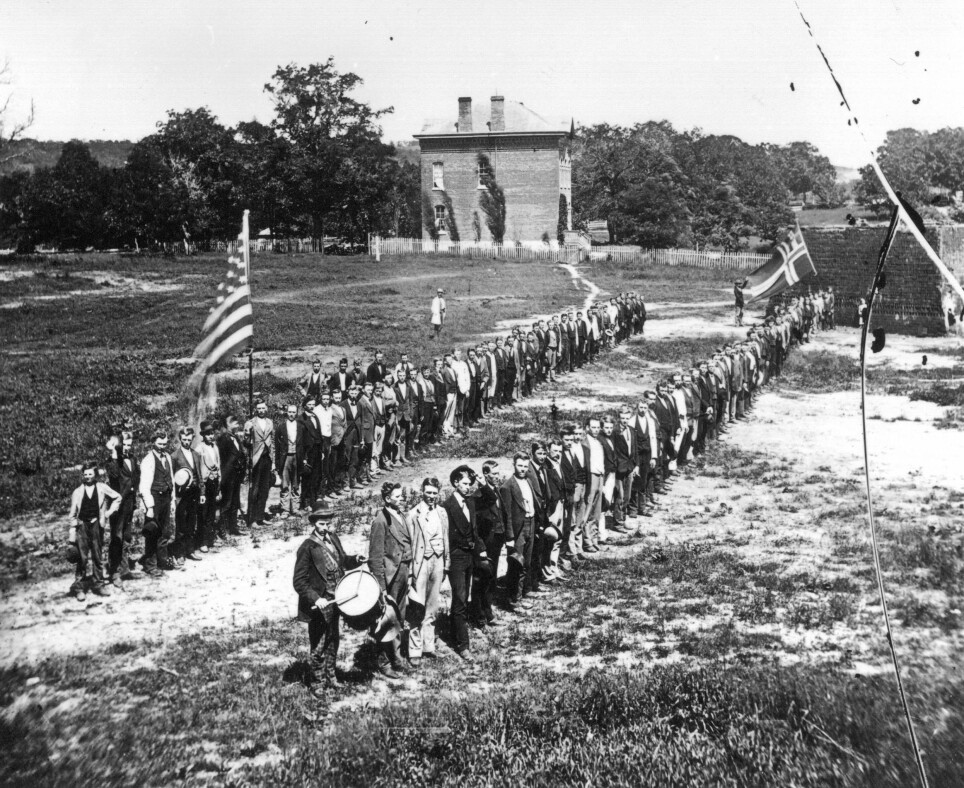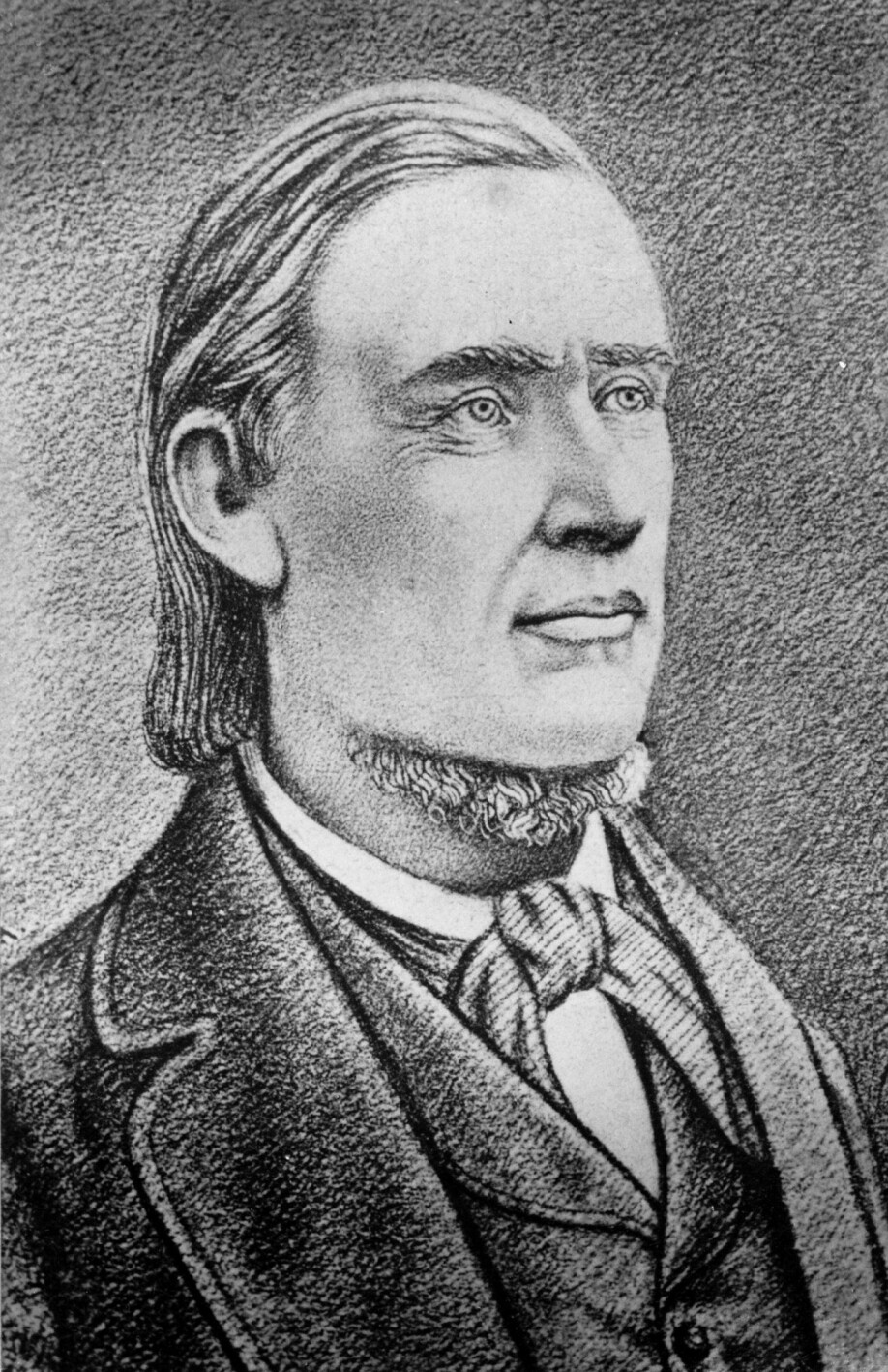
Many Norwegians supported slavery in the United States
But the persecuted Haugean Christians were clear in their belief: No one has the right to own another human being.
Upon their arrival in America, Norwegian men and women were focused on owning land. A conflict arose between Norwegian landowners and unionized industrial workers who believed that all property should be shared – or owned by the state.
However, the question of land wasn’t the only topic that inflamed political passions for Norwegian Americans.
Division could also be found within Norwegian groups that dealt with slavery.
This conflict took place between Norwegians who had belonged to the state church of Norway and the Haugeans.
Two immigrant groups with conflicting beliefs
Hans Nielsen Hauge was born on 3 April 250 years ago. He was the Norwegian preacher who founded the Haugean movement, also known as Haugeanism.
This Christian revival movement spread throughout Norway in the early 1800s. It stood in bitter opposition to the state church, the upper class and the entire legacy of the monarchy, and not least the government officials.
“Large groups of the Norwegian population felt at home in the Haugean movement and had strong confidence in the founder Hans Nielsen Hauge. The first generations of Norwegians emigrating to America in were probably mostly Haugeans,” says historian Sverre Mørkhagen.
The earliest emigrants travelled from a Norway where it was forbidden not to be a member of the state church. The priests had great power over the people.
In the United States Haugeans were given the freedom to practise their faith, and their strongly conflicting beliefs with Church of Norway Christians became clear.
Norwegian immigrants thus more or less formed two parallel groups, and in many places they each built their church practically side-by-side. The only thing they had in common for a long time was that they were from Norway and spoke Norwegian, according to Mørkhagen.
“It took about half a century before they began to approach each other both socially and ideologically,” he says.
- Read the reply from Nancy L. Coleman: There is no evidence that many Norwegian immigrants supported slavery in the USA

Controversy over slavery
The one important issue in particular that they strongly disagreed on, and which became very clear in connection with the civil war, was slavery.
“The conflicts between the two groups were most apparent when it came to the topic of slavery,” says Mørkhagen.
Haugeans were very clear about what they thought: No one has the right to own another human being.
“The Haugean stance was crystal clear and uncompromising,” says Mørkhagen.
But the state church tradition was more ambiguous. Many people in this group were influenced by a Calvinist understanding of Christianity, where the question revolved around predestination: You are what you were born as, since God created you. If you are born a slave, it is God's intention that you should be a slave. If you are born into the upper class, it is God's intention that you should be there.
"No sin in itself to keep slaves"
In the discussion that arose, the leaders of the state church chose to look to the Bible to take a stand on slavery,” Mørkhagen says in his book Drømmen om Amerika (The Dream of America).
For example, the book of Exodus contains several testimonies referring to the Israelites keeping slaves, not least Abraham.
In addition, Leviticus states that no one can have Israelites as slaves, since they are God's chosen people, but that the Israelites themselves can own slaves.
“The priests therefore concluded somewhat artfully that slavery was not a sin ‘in itself’; the moral question was who the owners were and how they treated their slaves,” says Mørkhagen.
Norwegian priests' view of slavery
Brynjar Haraldsø is an author who has written several books on Norwegian church history, including Slaveridebatten i den Norske synode: en undersøkelse av slaveridebatten i den Norske synode i USA i 1860-årene (The Slavery Debate in the Norwegian Synod: A study of the slavery debate in the Norwegian synod in the United States in the 1860s) in 1988.
The Norwegian synod is another word used for the Norwegian state church tradition in the USA.
In the book, Haraldsø concludes that these priests favoured slavery more:
"In this debate, the majority of the priests, who were almost all Norwegian and most of them educated in Norway, asserted the doctrine that it is in itself not a sin to keep slaves," Haraldsø writes.
He emphasizes that it is "both historically and ecclesiastically interesting that Norwegian priests in the United States during and after the Civil War had and defended such a view of slavery."
Nevertheless, he believes that many ordinary members of the church community opposed this view of slavery.
Proud to be Norwegian
According to the Norwegian Emigrant Museum, many Norwegians were proud to be Norwegian-Americans, especially in the period between 1895 and 1925.
One thing in particular made Norwegian immigrants luckier than others when they first set foot on American soil: they were white.
This was an important reason why immigrants from Scandinavia were accepted by the Anglo-American elite, who were Americans with roots in England, Wales and Scotland.
People who came from Ireland, on the other hand, were Catholics and in fact were not considered white.
Irish immigrants had to fight to prove their whiteness in American hierarchical and racist society, according to Terje Mikael Hasle Jorange.
He has not researched slavery, but recently published a book about Norwegians' whiteness in the United States as part of research on Norwegian immigration and assimilation in the United States.
A different whiteness
Being white was not just about your skin colour.
“Whiteness can instead be considered a privilege, a myth that has influenced the identity, the view of one's own group and the integration process among Norwegian and Nordic immigrants in the 19th and 20th centuries,” says Jorange.
Since Norwegians were considered white and thus relatively high up on the ethnic ladder, they had the opportunity to buy land, the right to vote and were considered “good” American citizens.
According to Joranger, the hierarchy in the USA placed Anglo-Americans, who originally came from Britain, at the top. Then came Germans, followed by Scandinavians, Eastern and Southern Europeans, Asians, indigenous peoples, African Americans and finally Latin Americans.
Norwegian men and women thus enjoyed the respect they received from other settlers. They took an active part in the settlements on the prairie and helped to form the soul of the American people.
Translated by: Ingrid Nuse.
Read the Norwegian version of this article on forskning.no.
References:
Terje Joranger et al: Nordic Whiteness and Migration to the USA. A Historical Exploration of Identity. Routledge. ISBN 9780367277185. Summary by publisher.
Sverre Mørkhagen: Det norske Amerika. Gyldendal. 2017. ISBN: 9788205508309
Sverre Mørkhagen: Drømmen om Amerika - innvandringen fra Norge 1825-1900.(The dream of America - immigration from Norway 1825-1900). Gyldendal. 2021. ISBN: 9788205508293
Brynjar Haraldsø: Slaveridebatten i den Norske synode: En undersøkelse av slaveridebatten i den Norske synode i USA i 1860-årene med særlig vekt på debattens kirkelig-teologiske aspekter (The slavery debate in the Norwegian Synod: A study of the slavery debate in the Norwegian Synod in the USA in the 1860s with special emphasis on the ecclesiastical-theological aspects of the debate). 1988. University of Trondheim.































